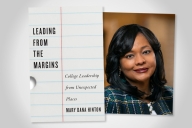You have /5 articles left.
Sign up for a free account or log in.
Initiatives to raise awareness of open educational resources -- free and openly licensed teaching and learning materials -- are having a measurable impact on the number of faculty members using OER in their classrooms.
Many colleges, systems, states and multi-state regional compacts have launched OER programs in recent years -- creating policies that promote the use of the resources, launching publicity campaigns to increase understanding of how to find and use them, and dedicating funding to help instructors work OER into their lessons or develop their own openly licensed materials.
These efforts to promote OER are working, according to new survey data published today by Bay View Analytics in partnership with the Western Interstate Commission for Higher Education's Cooperative for Educational Technologies (WCET).
The survey found that faculty members who are aware of one or more OER initiatives are much more likely to be adopters of OER. This is true regardless of the instructors' type of institution, the level of course they teach, or where they are located in the U.S.
"The surprising thing to me was not that these OER initiatives made a difference, it was that there was no group for which these initiatives did not make an impact," said Jeff Seaman, director at Bay View Analytics.
"If you're aware of an OER initiative, you're much more aware of OER in general, much more likely to adopt, and if you haven't adopted, you're much more likely to say that you will adopt in the future,'" said Seaman. The survey found that faculty members are three to four times more likely to adopt OER If they are aware of an OER initiative, no matter what type of initiative it is, or who is leading it.
It's not unusual for higher education leaders to launch initiatives and policies without really knowing if they have much impact on the people they're intended to help, said Tanya Spilovoy, director of open policy at WCET. "This is a study that shows that high-level initiatives on OER do make a difference," she said.
Awareness of OER has grown steadily over the past five years, and faculty decisions to use OER as their required course materials have grown year over year, said Seaman. While awareness of OER is growing, 69 percent of faculty remain unaware or only "somewhat aware" of OER, down from 83 percent in 2014-15.
The number of faculty who are "very aware" or "aware" of OER and Creative Commons licensing rose to 31 percent in 2018-19, up from 17 percent in 2014-15. At the current rate of increase, it would take another five years before a majority of teaching faculty become "very aware" or "aware" of OER, said Seaman.
Just under half of faculty members surveyed at two-year institutions were aware of an OER initiative at their college, compared with 29 percent of faculty at four-year colleges. This difference is likely the result of a strategic focus by OER funders such as the William and Flora Hewlett Foundation on increasing the availability of free textbooks in introductory-level courses and at community colleges, said the report.
In future research, Spilovoy and Seaman said they would like to explore in more detail which kinds of initiatives have the biggest impact on OER adoptions. In general, Spilovoy said she would like to see more OER initiatives auditing their results to better understand where to dedicate resources. But given that the majority of faculty members are still unaware of OER, Seaman said he would encourage higher ed leaders not to overthink this process.
"Just do something. Get the word out -- it will make a difference," sad Seaman. "Don't wait for more research to tell you what to do. We know broadly that across all types of institutions and faculty, that once they're aware of OER, it makes a difference."
Successful OER initiatives can start anywhere, said Spilovoy. As part of the SPARC Open Education Leadership Program (which Spilovoy co-designed and teaches with Nicole Allen, director of open education at SPARC) all graduates are required to launch their own OER initiative. So far 64 people have graduated from that program, many of them librarians. But students, faculty, administrators and policy makers can all play a role. "We're seeing more and more interest in OER at the system, state and multi-state level," said Spilovoy.
A total of 4,399 faculty and 1,431 chairpersons responded to the survey, which took place in the fall of 2019. The results do not capture the impact of the COVID-19 pandemic on OER awareness and decisions, but OER proponents told Inside Higher Ed that they have seen a notable increase in interest since March.
"I'd describe the growth as off the charts," said Richard Baraniuk, founder of OpenStax, one of the leading providers of OER textbooks. "We're in a special moment in history -- a critical time for OER as course modalities are changing rapidly from in-person to hybrid to online," he said.
More than 100,000 students and instructors have created OpenStax accounts to access additional free resources associated with OpenStax textbooks since the spring -- an increase of more than 200 percent compared to the same period last year, said Baraniuk. OpenStax has also hosted more than 30 webinars since March that have attracted over 3,000 instructors who are interested in finding out more about OER.
Many instructors are busy redesigning their curricula to work in new modalities and are open to experimenting with new course materials. Instructors and students want materials that are low-cost, accessible and flexible, said Baraniuk. Rajiv Jhangiani, associate vice provost of open education at Kwantlen Polytechnic University in British Columbia, agreed.
Faculty are aware that choosing affordable course materials is really important to students, especially now given the economic impact of the pandemic on students' finances, said Jhangiani. Kwantlen has seen a 25 percent increase in adoption of OER since the fall, and 35 percent of faculty now "actively engage in open education," said Jhangiani.
A Kwantlen program offering OER grants to faculty members who want to adopt, adapt or create their own openly available resources received three times more applications in May than it did in January, said Jhangiani.
It's not just the affordability of OER that is driving faculty decisions, explained Jhangiani. Some instructors have expressed frustration with long delays in students receiving print textbooks because of slower supply chains due to the pandemic. Additionally, Jhangiani and his colleagues have found that some publisher platforms for digital course materials are not accessible to students based overseas, particularly in China where firewalls can block international websites. "We know that we can embed OER in our learning management system and it will be accessible anywhere, regardless of geolocation," he said.
David Ernst, director of the Open Education Network, shared that many members of the OEN have seen increased interest from faculty in OER since March. Ernst forwarded anecdotes from representatives at Brigham Young University, Marian University, Roger Williams University, Rutgers University, Temple University, Oregon's community college system, the Private Academic Library Network of Indiana (PALNI), the University of Kansas, and the University of North Carolina System, all indicating increased demand among faculty for OER training and workshops. Many instructors are in the process of moving to digital course materials as they prepare to teach remote or hybrid courses, and are increasingly aware of the financial burden students are under because of COVID-19, they said.
At Austin Community College, efforts to increase the number of courses with zero textbook costs have grown steadily. "We feel we've done some great work in the last four years, from offering 29 OER course sections in spring 2017 to 626 OER course sections in spring 2020," said Gaye Lynn Scott, associate vice president of academic transfer.
Whether the pandemic has sped up adoption of OER is difficult to say, said Scott. "In the summer of 2019, we offered 117 zero textbook cost sections; in the summer of 2020 we offered 226," she said. "Is that natural growth, or partly a response to not only moving our instruction online but a heightened awareness of our students' financial challenges?"
Sharing annual feedback from students who take classes using OER has helped to spread the word among faculty, said Scott. She notes it is also important to encourage faculty who have adopted OER to "preach the OER gospel" to their colleagues. "Faculty listen to faculty," she said.
There are many steps that instructors and institutions can take to encourage the use of OER, said Jhangiani.
"One really obvious one is to integrate OER into institutional policies, procedures and practices," he said. Whenever a new course is developed at Kwantlen, faculty are required to check if there are OER materials that could be used to teach the course, though there is no mandate that these materials must be used. The institution's course catalog is organized so that students can filter for classes that have zero textbook costs. Staff, including librarians and an open education strategist, are given dedicated time to support open education.
"Faculty need to know more than that using OER won't be penalized, they need to feel that use of OER will be actively supported and recognized," he said.









